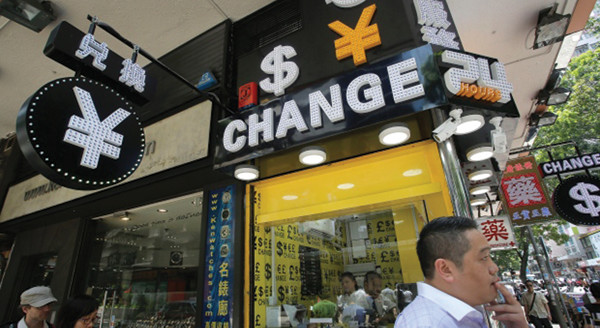
BEIJING/NEW DELHI (TIP): China set the reference rate for its currency more than one percent lower against the US dollar on August 13, the operator of the national foreign exchange market said, its third consecutive reduction.
The central bank put the yuan’s central parity rate at 6.4010 yuan for$1.0, the China Foreign Exchange Trade System said, a drop of 1.11%from the previous day’s 6.3306.
It was also lower than Wednesday’s close, and comes after China adopted a more market-oriented method of calculating the currency rate in a move widely seen as a devaluation.
The cuts have put financial markets on edge, sparking worries of a “currency war” as other countries feel pressure to devalue and raising questions about the health of the world’s second-largest economy, where growth is already slowing.
HOW DID THIS START?
In a surprise move, China devalued the yuan on Tuesday. Beijing doesn’t let buying and selling in financial markets set its exchange rate the way the United States and other developed countries do. Instead, it links the yuan’s value to a basket of currencies. The composition of the basket is a secret, but it’s believed to be dominated by the U.S. dollar. Each day, the People’s Bank of China sets a target for the yuan, then lets the currency trade 2 percent above or below that level. On Tuesday, the central bank set the target 1.9 percent below Monday’s — the biggest one-day change in a decade.
WHAT’S CHINA’S MOTIVATION?
China says the devaluation was part of an effort to give market forces a bigger say in the exchange rate —something the United States and the International Monetary Fund have long called for. Chinese people, worried about the economy and seeking investment opportunities abroad, have been pulling money out of the country. That exodus has held down the yuan’s value. But because the yuan was tied to a rising U.S. dollar, it remained at high levels. By devaluing the yuan, the Chinese government was catching up to the market, not trying to counteract it. Or so Beijing says. Many economists also suspect a contributing factor: Beijing may be desperately trying to boost its economy. A cheaper yuan gives Chinese exporters a price advantage in foreign markets. And they need help: Exports dropped a steep 8.3 percent in July year over year.
INVESTORS FREAKED OUT
Plenty of reasons. The surprise devaluation suggests that something is spooking the Chinese government. Perhaps the Chinese economy is decelerating even faster than anyone realizes. Already, the IMF is forecasting 6.8 percent economic growth in China this year, the slowest rate since 1990. Signs of trouble are accumulating. On Wednesday, for instance, China reported that auto sales sank 6.6 percent in July. Investors are also worried about how a weaker yuan will affect exporters in other countries. Shares in exporters such as Caterpillar and General Electric fell in the market rout this week, though many economists say the yuan’s drop so far isn’t significant enough to do much damage. Then there’s the chance that other countries will adopt copycat devaluations to help their exporters compete with China, thereby igniting a currency war that disrupts international trade. On Wednesday, Vietnam allowed its currency to weaken in response to China’s move.
Finally, the Chinese devaluation complicates the Fed’s decision-making. The U.S. central bank, increasingly confident in the strength of the U.S. economy, is expected to raise the short-term rate it controls later this year. The Fed has kept the rate at zero since December 2008. But a cheaper yuan poses a threat to U.S. exports and economic growth. It also lowers inflation, already running below the Fed’s 2 percent annual target. Still, most economists suspect the yuan’s drop won’t have much of a lasting impact. They continue to expect the Fed to raise rates at its September meeting.





Be the first to comment